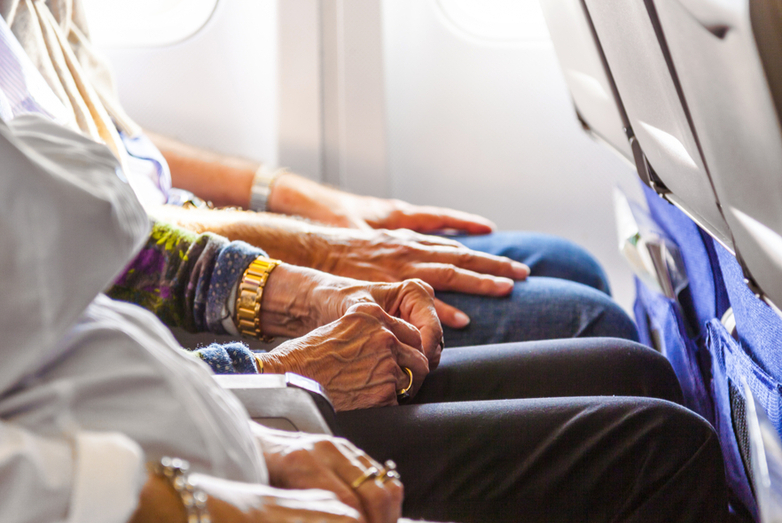There are several risks to airline travel for elderly passengers that you need to be aware of. There is always the option to transport elderly passengers by automobile via non-emergency medical transportation, even as far as clear across the country.
In fact, at Stellar Transportation we offer long distance non-emergency medical transportation for seniors with a strong focus on safety and comfort.
Using this form of transportation will help avoid some of the risks associated with airline travel for seniors outlined below.
4 Airline Hazards for Seniors to Be Aware Of
Higher risk for illness
As we age, our immune system decreases in strength. That’s why elderly persons are at a greater risk of getting sick or picking up an illness. There’s a big risk of getting sick when traveling by plane and through packed airports. From touching contaminated surfaces to airborne illness, there are many ways to pick up a bug.
In addition, elderly passengers are at risk of other types of illnesses as well, such as blood clots, especially common in the legs. If this occurs, there’s the added risk of deep vein thrombosis, which can be life threatening.
Discomfort During and After the Flight
It’s more difficult for elderly passengers to get comfortable, especially in the tight quarters of an airplane cabin. This physical discomfort can cause issues and flare up existing conditions, while placing unnecessary stress on the passenger.
Airplane cabins have limited oxygen and reduced air pressure, which can aggravate cardiovascular disease as well as a lung condition called chronic obstructive pulmonary disease. In addition, sitting for long periods of time can cause joint stiffness, inflammation, and arthritis to become more painful. Even after the plane has landed, this pain may continue.
Increased Risk for Injury
Picture a crowded plane with everyone rushing to get off and reach their intended destination. While elderly passengers can board the plane early and avoid the rush to board the plane, it’s not so easy to avoid the rush getting off the plane and to baggage claim. Slower moving passengers are at a greater risk for injury.
While getting clipped with a stroller or accidently shoved by a hurried teenager is an easy inconvenience to overlook for an able-bodied person, it can result in injury for someone who isn’t that stable on their feet or suffers from brittle bones.
Even during a calm portion of the flight, a little turbulence can lead to a bag falling down or a stray beverage cart rolling into your loved one.
Jet Lag
Jet leg can create a lot of stress on elderly passengers and make them too tired to function. Let’s be honest, jet leg is hard on everyone – even younger passengers. It disrupts sleep schedules, increases the risk for exhaustion, and messes up medication schedules as well, which can cause confusion and additional health risks.
Side effects of jet lag include headaches, upset stomach, nausea, inability to fall asleep or stay awake, as well as poor concentration. All of these things can further complicate existing issues, especially if someone already suffers from a weakened immune system.
Ensure a Safer Trip for Seniors: Benefits of Non-emergency Medical Transportation
There are some precautions you can take to ensure a safer flight for elderly passengers, yet you still might want to consider non-emergency medical transportation instead. Benefits include:
- Affordable pricing for long distance – our pricing is very competitive!
- Have someone watching over your loved one at all times, keeping track of medications and other special needs
- Utmost comfort is guaranteed
- Door-through-door transportation, don’t worry about how your loved one will get in and out of the airport, we make sure they are safely transported out of their home and to their destination

